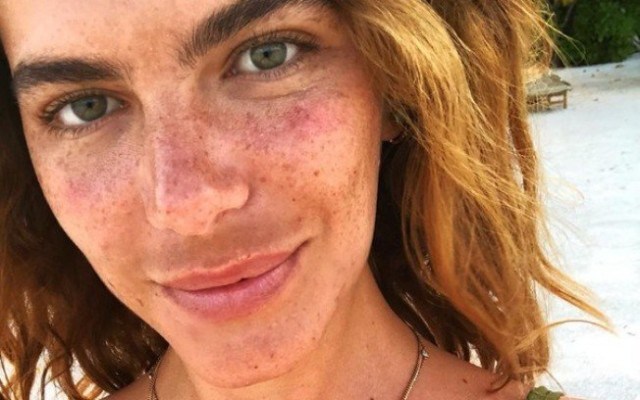Melasma’s invisible enemy! Did you know that heat from all sources can worsen dark spots on your skin? We tell you everything about it!
We know that unprotected exposure to the sun is the main reason behind unwanted skin spots , and should be avoided at all costs, especially by people who suffer from melasma — a chronic condition characterized by brownish marks in photoexposed areas, such as the forehead and cheekbones.
To prevent these spots from getting worse, it’s simple: just use sunscreen, right? Yes and no! The product, although essential for controlling them, does not protect against heat , which has been identified as an important factor in worsening the condition.
According to dermatologist Dr. Mônica Aribi, a member of the Society of Dermatology, heat causes vasodilation, which means it increases blood vessels and, consequently, blood flow. Melasma involves an important vascular factor, so prolonged exposure to high temperatures can cause these spots to darken. Vascular melasma is thought to be caused by the substance endothelin1, released by the blood to stimulate melanin. “One hypothesis is that this is triggered by inflammatory processes,” says the doctor.
However, this worsening is not only related to the heat from the sun and the external environment, but also to any situation that raises the skin temperature. For example, standing in front of the stove for a long time, going to saunas and heated pools, staying in heated environments, taking hot baths, sitting near fireplaces and campfires, facial steaming… all of these things can worsen melasma. “Even an increase in the body’s internal temperature, such as that which occurs during intense physical exercise, may be involved in this condition,” highlights the dermatologist.
What to do?
It is impossible to completely avoid heat, but there are some strategies that can be adopted:
— Reduce unnecessary exposure to heat as much as possible. For example, try to take baths with lukewarm or cold water, stay away from bonfires and fireplaces and avoid going to saunas. On hot days, air conditioning or a fan can be allies;
— Wearing lighter clothing is also a strategy;
— Wetting your face or using stone or metal massagers, especially if they have been stored in the refrigerator for a while before use;
— Try to exercise at times when the weather is naturally milder, such as at night, and take regular breaks so that your body temperature does not rise too much.
Remember that, even though it does not protect against heat, sunscreen is essential for controlling and preventing melasma spots. “It should be used daily and the product should have at least SPF 50 and, preferably, color, to protect against visible light, which has been identified as a trigger for these spots,” advises the doctor.
In addition, the use of topical products with a lightening action may also be recommended. There are several active ingredients that can be indicated for this purpose, but tranexamic acid stands out among them. “This is a substance that is well-established in the treatment of melasma, as it inhibits the release of an enzyme called plasmin in the skin, which occurs after aggressions, such as that caused by sun exposure, stimulating factors involved in the formation of these spots,” says the doctor.
Oral supplementation is also essential for controlling the disease, especially with anti-inflammatory active ingredients. “We live in a very hot country, with a high level of infrared radiation (heat). So how can we recommend that someone avoid the heat? That’s why supplementation is essential. If you don’t take supplements, there’s no point in treating melasma. It’s like trying to wipe the slate clean,” emphasizes pharmacist. And, since melasma is an inflammatory disease, it’s necessary to invest in supplements capable of reducing this inflammation, such as FC Oral, which have anti-inflammatory action clinically supported by studies. “Caviar phospholipids (FC Oral) contain omega-3, which has anti-inflammatory action due to the presence of EPA and DHA vectorized in phospholipids, astaxanthin and vitamin E. In this way, it provides anti-inflammatory action and also forms an epidermal barrier, keeping the cell membrane intact and hydrated. The presence of astaxanthin and vitamin E in its composition also provides antioxidant action, improving skin homeostasis (balance), protecting both the interior and the surface of the phospholipid membranes present in our skin against oxidative stress”, she says.
In the office, lasers are the key to combating melasma spots because, according to Dr. Mônica, they act on the pigment already deposited in the skin, breaking it down into small particles so that the body itself is able to gradually eliminate it after the session. To combat the vascular component, the Genesis Laser is a good option, in addition to helping to give the skin a glow and shine. To enhance the whitening results, lasers can also be combined with a Hydrafacial immediately afterward.
“To lighten spots, the Hydrafacial consists of four steps:
1) cleansing and chemical exfoliation with a glycolic and salicylic acid peel, which contribute to accelerating cell renewal, improving uniformity and reducing skin thickness;
2) extraction of impurities, blackheads and comedones with the infusion of a moisturizing solution;
3) application of the Britenol booster, which is formulated with Vitamin C and Alpha-Arbutin to promote lightening of blemishes and provide luminosity; and
4) administration of antioxidants to protect and improve the appearance of the skin”, says Dr. Mônica Aribi.
“In this way, the procedure is able to clean, renew, refine, revitalize, hydrate and purify the skin, thus improving the results of medical treatments that act to correct the skin tissue”, she concludes.

